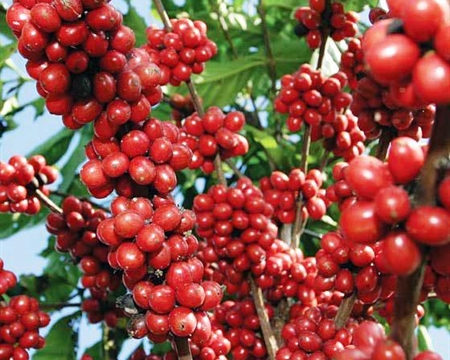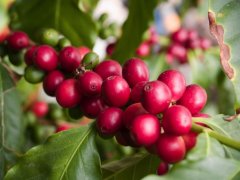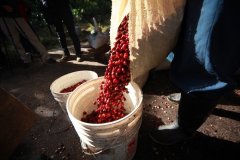Columbia Huilan Coffee Bean-Vera Plateau St. Augustine Colombian Coffee Bean Story

Professional coffee knowledge exchange More coffee bean information Please pay attention to coffee workshop (Weixin Official Accounts cafe_style)
Colombia Coffee Basics and Flavor Description
Name: Saint Augustine, Colombia
(Colombia Huila Forest San Augustin)
Country: Colombia (Colombia)
Region: Huila, San Augustin
Producer: Coagustinos Production Association of Vera Province
Breed: Caturra,Colombia
Altitude: 1,900 meters on average
Level: Supreme
Treatment method: Traditional washing treatment
Harvest period: 30% from April to June
September to January 70%
Certification: N/A
Flavor description: lemon, caramel cream, nutty tones, toffee, thick sweet palate.
Introduction:
To the west of Colombia proper is the Andes, divided into three parts: the western, central and eastern mountains. The Cauca and Magdalena rivers flow along the Caribbean Sea to the lowland plains. Colombia, currently the world's second largest coffee producer, uses water to process Arabica beans. It is also one of the world's largest producers of fine coffee, traditionally deeply roasted with a strong and memorable flavor. Coffee was first introduced to Colombia in 1808 by a priest from the French Antilles via Venezuela. Today, the country is the third largest coffee producer after Brazil and Vietnam, producing 12 million bags of 60 kilograms per bag per year, compared with Brazil's 31 million bags per year. The status of coffee in Colombia can be seen in the following example: all vehicles entering the country must be sprayed to prevent inadvertent disease and damage to coffee trees.
The main producing areas are Huila(San Augustin), Nariño, Tolima, Popayan(Cauca), Valle de Cauca, Meta, Antioquia(Medellin), Magdelena(Sierra Nevada), Boyaca, Santander(Bucaramanga), etc. There are approximately 700 million recorded coffee trees in Colombia, 66 per cent of which are grown on modern plantations and the rest on small, traditionally managed farms. The main varieties include Catura, Colombia, Tipica, Bourbon, Maragogype and Tabi, operated by more than half a million farmers of all sizes in 590 municipalities and 14 major coffee-producing regions of Colombia. In total, 2 million Colombians depend on coffee cultivation for their livelihood and contribute 12.5 per cent of gross domestic product.
Huila Province is located in the west of Colombia. Coffee grows on the canyon slope formed by the junction of the western coastal mountains and the eastern mountains. San Augustino has the best quality because of the Los Naranjos River. The river bank scenery in this area is beautiful. There are large areas of flowers and plants that are habitats for butterflies and windbirds. This area is also the base camp for producing good coffee in Colombia. Many of the fine coffee beans produced by small farmers in this region are very characteristic of the region.
In recent years, with the emphasis on coffee quality and the requirements for fine coffee in the international market, micro-regional selections provided by small farmers from micro-production organizations are mainly used. Dozens of small farmers provide their unit harvest to be aggregated into a micro-batch for sale. Quality control will be better, and therefore there will be more opportunities to select many high-quality micro-production coffee through batch by batch cup testing.
This microbatch comes from the COOAGUSTINOS Production Association of Vera Province, which has about 800 small-scale coffee farmers with an average farm area of about 2 hectares. The harvest season of planting altitude rice is divided into winter and summer, 30% from April to June and 70% from September to January. Coffee Flavor Herbal Nanyang Spice Dark Chocolate Dark Berry Acid Orange Fruit Flavor Creamy acidity and thick taste, melon sweet taste Smooth, rose floral, clean fruit aroma, firm and balanced taste, good finish.
。
Important Notice :
前街咖啡 FrontStreet Coffee has moved to new addredd:
FrontStreet Coffee Address: 315,Donghua East Road,GuangZhou
Tel:020 38364473
- Prev

Antigua-Santa Catarina Manor Story how to give a speech on the theme of Guatemalan Coffee
Professional coffee knowledge exchange more coffee bean information please follow the coffee workshop (Wechat official account cafe_style) Guatemala coffee industry Guatemala coffee beans Guatemala coffee recommended Guatemala Antigua Santa Catarina Manor special reserved version of bourbon variety washing Guatemala Genuin AntiguaFinca Santa CatalinaGran Reserva Bour
- Next

Columbia Yunwu Manor Coffee Bean Story Flavor characteristics of Colombian Honey treated Rosa Coffee Bean
Professional coffee knowledge exchange more coffee bean information please follow the coffee workshop (Wechat official account cafe_style) Colombian coffee basic knowledge and flavor description Columbia cloud manor geisha honey treatment SOE single product concentrate / manor / Las Nubes cloud manor producer / Camilo Merizalde variety Variety/Geisha producing area / Cauca test card
Related
- Detailed explanation of Jadeite planting Land in Panamanian Jadeite Manor introduction to the grading system of Jadeite competitive bidding, Red bid, Green bid and Rose Summer
- Story of Coffee planting in Brenka region of Costa Rica Stonehenge Manor anaerobic heavy honey treatment of flavor mouth
- What's on the barrel of Blue Mountain Coffee beans?
- Can American coffee also pull flowers? How to use hot American style to pull out a good-looking pattern?
- Can you make a cold extract with coffee beans? What is the right proportion for cold-extracted coffee formula?
- Indonesian PWN Gold Mandrine Coffee Origin Features Flavor How to Chong? Mandolin coffee is American.
- A brief introduction to the flavor characteristics of Brazilian yellow bourbon coffee beans
- What is the effect of different water quality on the flavor of cold-extracted coffee? What kind of water is best for brewing coffee?
- Why do you think of Rose Summer whenever you mention Panamanian coffee?
- Introduction to the characteristics of authentic blue mountain coffee bean producing areas? What is the CIB Coffee Authority in Jamaica?

